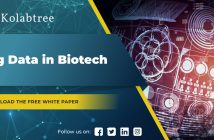There is an unprecedented demand for freelance statisticians in research, especially in clinical research, However, as the progress towards real-world data & real-world evidence continues, there is more and more emphasis on how a statistician’s expertise cannot be limited to just the knowledge of statistical methods.
Research in public health and epidemiology has been growing rapidly, and scientists are choosing to hire freelance statisticians to design clinical trials and get better results of their research. Successful design and performance of clinical trials require statisticians to get more exposed to laboratory experiments.
While working on clinical research, freelance statisticians are expected to internalize the objectives of the clinical trial, store different forms of data, provide guidance on the limitations of the data and lastly, perform analyses of the data collected. Clinical statisticians have a big role to play in the understanding of clinical data, and most importantly, in presenting their results to the regulatory agencies and the industry at large.
Here’s a peek into the role of a freelance statistician across the various stages of clinical development & product life cycle.
1. Clinical Trial Design
Clinical testing for a treatment product involves four phases of clinical trials – Phase I, Phase II, Phase III and Phase IV. Traditionally, Phase I and II were considered non-conclusive by regulatory agencies. However, times are changing and gathering biostatistical analyses during early stages is being considered as an effective approach to better the experimental accuracy and speed for late stages. The results of in-depth biostatistical analyses of Phase I & II results can aid in achieving the precision required for Phase III whose results are considered most crucial for regulatory approval. Hence, it is a good stage for a scientist to team up with a freelance statistician and onboard them into the clinical trial design processes before proceeding with clinical data monitoring of Phase III.
A biostatistician provides statistical support to clinical studies through 5 steps of clinical development – conception, design, conduct, analysis and reporting of drug activity information taken by subjects. In the conception process, the biostatistician has to estimate the sample size according to the therapeutic indication and accordingly decide the inclusion criteria. The biostatistician can aid the investigators with randomization of data and fixing the formats for recording clinical data. It is at this step that the exact clinical study protocol will be thoroughly documented.
It is becoming increasingly popular to hire a freelance biostatistician who has worked in the pharmaceutical industry for all statistical work on one particular drug or indication. Such experienced freelance biostatisticians are useful for conducting interim meetings and assessing the sample size for clinical trials based on the project’s budget allocation and timelines.
Statisticians participate in meetings to decide the clinical study endpoints (whether there should be one primary endpoint or secondary endpoints or surrogate endpoints), interim study monitoring and also define the timeline of the study. Statisticians also choose the right software & statistical methods for the data, as well as deciding the sampling error criteria.
2. Regulatory Planning
Clinical biostatisticians work closely with the trial supervisors, principal investigators, and the trial monitoring committees according to guidelines mentioned in guidance documents published by regulatory bodies – FDA, EMA, MHRA, CFDA, TGA, ICH, and WHO among others. Guidance documents are provided by regulatory bodies to aid in planning clinical trials according to regulatory approval parameters. The guidance document consulted at the time of designing a clinical trial has to be the most updated one and should be thoroughly studied to meet the trial objectives effectively. It also lays the foundation for the clinical trial monitoring committee while planning the regulatory strategies. There is immense scope for biostatisticians to become involved in these steps and work on the analysis of efficacy and safety data which will be essential in the regulatory process later on.
Biostatisticians use programming software like SPSS and SAS to check testing parameters that may be prone to error and hence devise solutions to prevent them. SPSS has been used by most statisticians to aid doctors in deciphering large amounts of epidemiological data and screen patients for clinical trials. A lot of clinical statisticians prefer R which performs Propensity Score Matching used frequently for clinical trial data analyses with 95% CI (confidence interval).
3. Risk Monitoring
In a clinical trial, the chances of error are high at every stage, especially since they run for years at a time. However, if a clinical trial monitoring committee ensures that a team of biostatisticians is involved in the trial’s normal functioning, the chances of minimizing the error are higher. A team of clinical statisticians can check if the collected data shows a normal distribution of data.
The distribution of data can be checked for reproducibility to ensure precision and accurate data collection. In a case when erroneous data is found, the trial monitoring committee can take decisions effectively and prevent ambiguous clinical study reports. Statisticians have the primary responsibility of checking variability in the data and accuracy of the analysis before they are submitted to the regulatory team or the clinical documentation specialist.
Statisticians associated with clinical trials are required to communicate the Statistical Action Plan with Risk Management Protocols for every project. The biostatistician is primarily responsible for ensuring accurate data blinding, report analysis and finalizing clinical study report during which, a thorough check of the data is conducted to ensure that the correct inferences have been made.
This requires setting up a centralized statistical monitoring team which oversees analysis, reporting, and presentation of data using the latest versions of statistical software – SPSS, R or SAS.
A statistical monitoring team consists of clinical programmers involved in the intricacies of data storage and data analysis. Clinical programmers focus on different analytical methods such as multivariate analyses, regression modeling, simulations, and other mathematical modeling approaches to enhance reproducibility and enable advanced data visualizations.
4. Effective Communication of Results
Freelance statisticians have to be highly analytical and strong communicators to convert their analyses into breakthrough hypotheses. This is what differentiates a high-quality biostatistician. Biostatisticians are at all levels required to work globally with strong abilities to communicate the clinical case analyses in detail. Most importantly, as thorough professionals, biostatisticians bridge the gaps between medical and non-medical audiences while discussing clinical trial reports. This means their decisions and conclusions in every step of clinical research is communicated effectively using email, teleconferences and face-to-face meetings, as the need may be.
Clinical biostatisticians have a mammoth task of creating questionnaires that record every detail of clinical trials. While clinical data are recorded through interviews with patients, clinic visits, surveys, and questionnaires, understanding every aspect of the therapeutic indication, drug’s pharmacological and pharmacokinetic activity, and patients’ adherence to treatment profile requires a higher sense of scientific expertise.
Storing, analyzing and presenting these data in a compact, user-friendly manner is key to the case report’s accuracy. Additionally, the biostatistician will work closely with the study SAS programmer to present the results clearly for non-statistical readers. Thus, clear communication is a multifaceted function in clinical biostatistics, involving every aspect of the clinical trial protocol. Not just that, freelance statisticians also help in creating large databases to store clinical data in encrypted/protected formats.
5. Finalization of Clinical Study Report & NDA Preparation
Traditionally, statisticians were excluded from discussions involving new drug applications (NDA). However, the past decade has witnessed the positive change of including statisticians while preparing NDAs. The shift is in part, due to the increasing expertise displayed in data cleansing, simulation, and organization of data that has made clinical statisticians an essential part of the clinical trial reporting process.
Statisticians and clinical programmers work in tandem on normalization, distribution, and visualization of data for clinical study reports while focusing on reducing redundancy, non-ambiguity, and effectiveness of data. The accessory clinical reports showing the safety and efficacy data are also finalized according to the requirements of the regulatory review meetings. Statisticians also establish the grounds for data-driven decision making and ensure the conclusiveness of the data.
In the current atmosphere of global clinical settings, freelance statisticians have a big task of deciphering large chunks of big data, converting them into useful visuals and presenting them to regulatory bodies in order to get drugs and devices approved.
More recently, clinical statisticians are starting to show precision in the practical applicability of statistical methods including probability distribution models on healthcare data. This has enabled the epidemiological research fraternity to get much further in understanding disease progression, disease prevalence and incidence rates than before.
The upward trend is definitely a silver lining for many, as statistics and data science continues to govern healthcare decision making. Now, the important task for a scientist is to keep track of the changes & developments published regularly by the global regulatory bodies as they keep revising the guidelines & submission criteria for New Drug Applications. More and more companies are facing a flutter of rejections and complete response letters (CRL) due to lapses in clinical data.
If you are a principal investigator looking for faster regulatory approvals, you should get in touch with a freelance statistician who will design a precise data-driven clinical development pathway for you!
Looking to hire a freelance statistician? Choose from a number of biostatisticians on Kolabtree or simply post your project for free.







